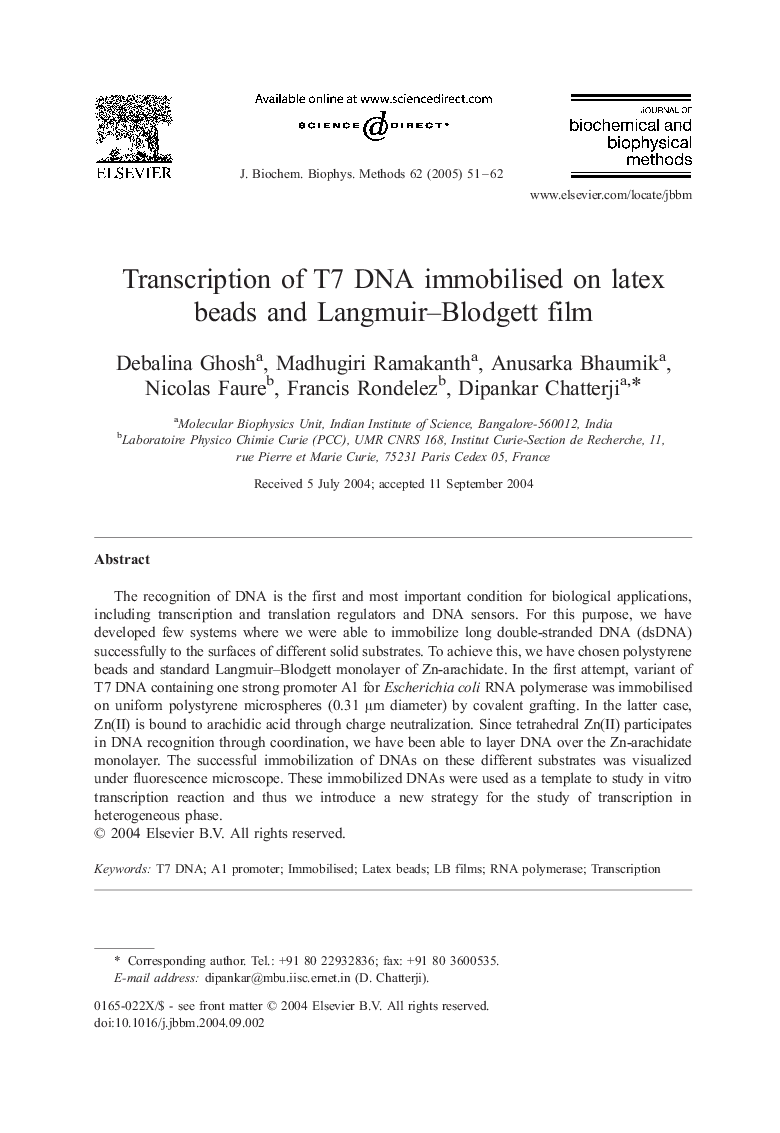| Article ID | Journal | Published Year | Pages | File Type |
|---|---|---|---|---|
| 10825180 | Journal of Biochemical and Biophysical Methods | 2005 | 12 Pages |
Abstract
The recognition of DNA is the first and most important condition for biological applications, including transcription and translation regulators and DNA sensors. For this purpose, we have developed few systems where we were able to immobilize long double-stranded DNA (dsDNA) successfully to the surfaces of different solid substrates. To achieve this, we have chosen polystyrene beads and standard Langmuir-Blodgett monolayer of Zn-arachidate. In the first attempt, variant of T7 DNA containing one strong promoter A1 for Escherichia coli RNA polymerase was immobilised on uniform polystyrene microspheres (0.31 μm diameter) by covalent grafting. In the latter case, Zn(II) is bound to arachidic acid through charge neutralization. Since tetrahedral Zn(II) participates in DNA recognition through coordination, we have been able to layer DNA over the Zn-arachidate monolayer. The successful immobilization of DNAs on these different substrates was visualized under fluorescence microscope. These immobilized DNAs were used as a template to study in vitro transcription reaction and thus we introduce a new strategy for the study of transcription in heterogeneous phase.
Related Topics
Life Sciences
Biochemistry, Genetics and Molecular Biology
Biochemistry
Authors
Debalina Ghosh, Madhugiri Ramakanth, Anusarka Bhaumik, Nicolas Faure, Francis Rondelez, Dipankar Chatterji,
